- How do products last longer in the fresh zone?
- Dry and wet zone of freshness - what is the difference?
- How to understand that sellers are substituting concepts?
- Cons of refrigerators with a freshness zone
- What is the name of the freshness zone by popular equipment manufacturers
- How to store food in the fresh zone?
The freshness zone in the refrigerator - what is it? Really useful thing or another advertising move? Opinions of people about this function differ radically, but we will try to give you the most unbiased answer.
How do products last longer in the fresh zone?
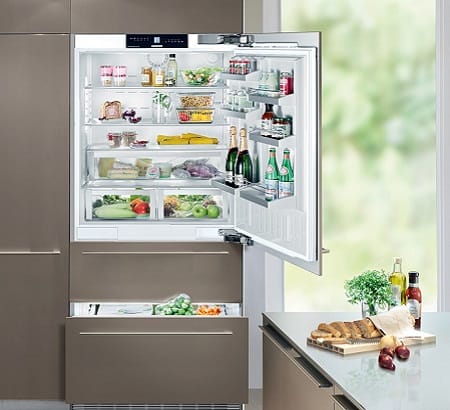
Persist, fact. And there is no need to listen to skeptics and home-grown gurus who chuckle: “They came up with this ... What other zone of freshness? And the rest then what? A zone of staleness? ”.
In this compartment, the temperature is maintained at 0C, while in the usual compartment of the refrigerator the cooling range is from +4 to +7, and in the freezer there are already sub-zero temperatures.
The freshness zone can be compared in functionality with a showcase of a butcher's shop, there is the same degree of cooling. It allows you to keep food fresh, preventing the decomposition and development of bacteria, while not freezing a drop.
If the degree is slightly higher or lower, such a result will not work, in any way. There is also an opinion that there is no need in the freshness zone. Say, set the overall temperature to about +1 - + 2 and you will get a fresh zone without overpaying, and, moreover, not one box, but the entire refrigerator.
So - this is nonsense. If you do this, the refrigerator will "order a long life." Well, it is not intended to constantly work at too low temperatures. For him there is an optimal “plug” - +5 - + 6 degrees, and from this all other functions are calculated: auto-defrosting, power consumption, energy absorption of the motor ...
Therefore, of course, you do not need to "save" anything in this way. Only, very soon you will need to purchase another refrigerator. So calculate how much you will save in the end.
See also:
- 7 best Bosch refrigerators according to customer reviews
- 8 Best Samsung Refrigerators According to Buyers
- 9 best cheap refrigerators according to customers
- 10 best LG refrigerators according to customer reviews
Dry and wet zone of freshness - what is the difference?
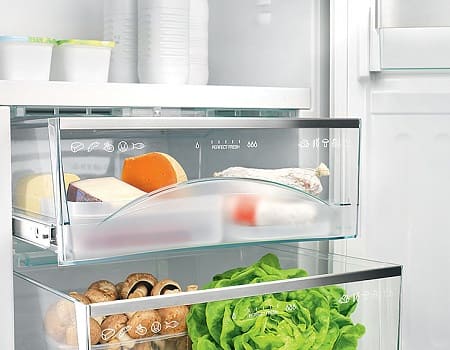
Manufacturers offer refrigerators with this functionality in two versions:
- Dry freshness zone
- Wet zone of freshness
Some units are equipped with one of them, and some with two at once. Of course, those that have both zones are much more expensive. But with one too, the refrigerator will cost more than usual by 50%, no less.
So is it worth it to overpay?
In our opinion, it is worth it. Let's first take a look at these two zones in practice, then you can see for yourself that the benefits are obvious.
Wet zone of freshness - designed to preserve vegetables, fruits and herbs in their original form for a sufficiently long time. Even green onions lie not turning yellow for at least 1.5 weeks, whereas, at normal temperatures, on the third day it begins to turn yellow, and on the fourth day it starts to rot.
If you put washed vegetables there, then they are also perfectly stored, but in the usual one they instantly dry out or the process of decay begins.
Dry freshness zone - This is a compartment for raw meat and fish. In an ordinary refrigerator, you know, literally on the second day, the meat begins to become covered with a sticky layer and deteriorates. Immediately - no! You can put the purchased piece of meat and not rush into cooking, it will not disappear in a week. And you will not need to freeze, thereby deteriorating the taste and depriving it of moisture.
Or, for example, a frequent case: I defrost a piece of meat, planning to cook, and then, suddenly, plans suddenly changed and there was no time left for cooking that day. And you have to put the product in the freezer again. And after double defrosting, there will be absolutely no meat.
And for such, cases, a zone of freshness is very useful.
Customers who have this function in their refrigerator unanimously agree that this is the most convenient invention. Maybe out of a hundred percent, only one did not appreciate the benefits and does not often use this compartment. And this is not a study of British scientists, but opinions from open accesses on the Internet: forums, blogs. That is, they are not biased and in no way similar to the stretched praises of marketers.
![]() See also - The principle of operation of the refrigerator
See also - The principle of operation of the refrigerator
How to understand that sellers are substituting concepts?
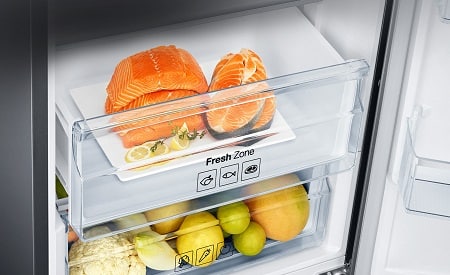
Perhaps the opinion of skeptics is based precisely on the fact that they had to face a pseudo-zone of freshness. Yes, there is.
Taking advantage of the fact that this is a popular innovation, in some stores they shamelessly call ordinary boxes for storing vegetables, which are usually located below, closer to the freezer, as a freshness zone. And due to the fact that the boxes are more or less closed and are in the coldest part of the unit, vegetables are stored there better than in the upper compartments.
But, this has nothing to do with the real zone of freshness! And put a piece of meat in there, it will disappear as quickly as in other parts of the refrigerator. Even faster, due to the fact that there is poor air access, but not a vacuum, by no means.
So, how can you determine that the seller is cheating, calling the zone of freshness is not at all what you need? However, it may be that he himself does not really know. Therefore, as they say: trust, but verify!
Buying a refrigerator is not a momentary purchase. Therefore, we recommend that you first go to the store, look after the model, remember the characteristics. And already at home, find the official website of this brand and read the real information on it. On branded sites, they will not lie and embellish, this is not at all into their hands, since the honest name is undermined. And to the shops to lie, how can we sneeze. So, check and check again.
But beyond that, you should know exactly what a real refrigerator with a freshness zone looks like.
- It is never removable
- Separate outputs are visible on the rear wall
- In some models, the temperature is regulated in it
- It looks like a tightly closing box
- Located, as a rule, all the fridge
That is, you should understand that this department does not depend on the temperature of the refrigerator itself and separate openings for supplying cold air are displayed for it.
Cons of refrigerators with a freshness zone
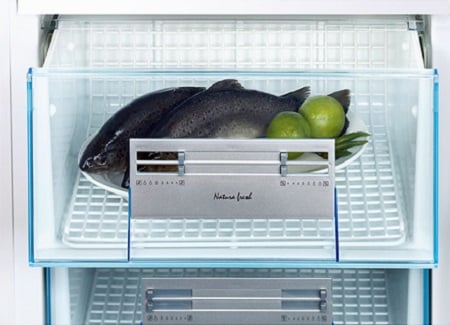
Of course, there were some drawbacks. But, in our opinion, these disadvantages are also conditional. Since, they are felt only if the size is incorrect.
The zero temperature container takes up quite a lot of space. And, in the place where the door touches it - there are no shelves. This, of course, reduces the usable area of the refrigerator. Pots and all kinds of jars, flasks will fit less.
But, this drawback is noticeable only if the refrigerator is 1.80 in size. If you take a two-meter, then there will be another, additional shelf and you will not have to cram the food into the camera with difficulty.
Another disadvantage of a refrigerator with a freshness zone is the price.But this is already, you know ...
For the rest, from whatever side you look, it is difficult to find the minuses. The presence of a freshness zone does not in any way affect the overall energy consumption or the overall operation of the refrigerator.
What is the name of the freshness zone by popular equipment manufacturers
Freshness zones are named differently for each brand. Firstly, mainly in our market there is a foreign manufacturer and the translation of the name is sometimes not entirely accurate. And secondly, they, apparently, intentionally invent unique names, for better memorability.
So what do different firms call this function?
- Liebherr - Biofresh
- AEG and LG - Fresh Zone
- Hotpoint Ariston - Fresh Box
- Electrolux - Natura Fresh
- Indesit - Flex Cool
- Siemens -Vita Fresh
- Gorenje - Zero’N’Fresh
Domestic manufacturers have almost no products with this function.
How to store food in the fresh zone?
If these are fruits, then they can be stored completely without packaging. Moreover, you can put plates with salad in the open. And they will stand fresh, not even weathered!
But in a dry area intended for storing meat or fish, it is imperative to wrap products. Since the temperature is dry and low, a small snow crust may form on the meat and, although there will be no freezing inside, but still, it will draw excess juice from the meat when it thaws. Better - wrap, then this frost will settle on the package.
Now you know what a fridge freshness zone is. And now you will have something to answer in response to the skeptical opinions of the "experts".
See also:
- 10 best Atlant refrigerators according to owner reviews
- 10 best refrigerators from 420–560 $ according to buyers
- 11 best BEKO refrigerators according to customers
- 15 best Liebherr refrigerators according to customer reviews

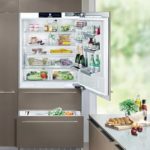
Rave. There is no problem maintaining +1 or +2 degrees, you just need other system settings. The freezer does ~ -18 and nothing works. And in the same refrigerator on the same compressor.